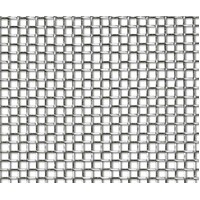For brood breaks and healthy hive management.
As varroa mites become resistant to miticides, and varroa re-invasion issues become more severe, beekeepers all over the world are desperately searching for alternative treatments.
Brood breaks in conjunction with Oxalic Acid (OA) vaporization is extremely effective and low cost and is becoming a very popular option.
The purpose-built cages are made from food-grade Polypropylene.
They have a sliding door on both sides.
The side openings in the grill are 4.2mm, same as a queen excluder.
Nurse bees can go in and out to care for the queen.
To release the queen, slide open a door on the cage and she will come out as soon as the hive is closed back up.
The cage is large enough to allow plenty of pheromone distribution, so the bees don’t try to supersede her.
Outside dimensions:- 240mm x 29mm x 34mm high.
It is recommended to cut a window out of a brood frame and fit the cage into the window. See photos.
The bees will secure it in place.
The frame can live permanently in the hive. Position it as an outer frame in the brood box when it has no queen enclosed.
When the queen is inside, keep it near the middle of the brood box so she keeps warm and fed.
It is recommended to use a ¾ depth frame in a full depth brood box.
The bees will build drone comb underneath it.
If there are any mites in the hive, they will tend to go to these drone cells.
When they are all capped, they can be easily scraped from the bottom of the frame and disposed of, mites and all. (Chooks go crazy on them!)
Some beekeepers fit the cage between 2 frames in horizontal position instead of vertical.
See photo with plastic frames. The comb is scraped back to the foundation.
There is a question whether this way allows enough pheromone to be released but it seems to be okay.
There are many applications for this cage.
- Varroa control by creating a brood break then vaporizing with Oxalic Acid. (OA)
- Swarm Control
- To maximise a honey crop.
- When requeening with cells.
- For overwintering.
1. Varroa Control.
From mid-Spring to mid-Summer, 75% of the varroa mites in a hive can be breeding inside the capped brood cells and are protected from most varroa treatments.
By creating a brood break, all the varroa mites are exposed and can be killed with 1 – 3 cents worth of Oxalic Acid by Vaporization.
The InstantVap Vaporizer is very quick and efficient for this application.
Procedure: -
- Cage the queen for 18 days.
- Release her and wait 6 days.
- Then you will have 2 days where there will be no capped brood.
- Vaporize the beehive with OA and kill almost every varroa mite inside.
Most commercial queen breeders will mark queens for no extra charge. That makes them very easy to find to allow for quick caging and very low cost varroa control.
2. Swarm Control.
Cage the queen in Spring to control swarming and varroa mite populations.
There are 3 stages that usually precede swarming.
-
- Build excess amounts of drone brood.
- Build queen cell cups.
- Add eggs to cell cups to produce new queens.
The procedure is best performed during the first or second stage.
- Cage the queen for 18 days.
- Release her and wait 6 days.
- Then you will have 2 days where there will be no capped brood. Vaporize the beehive with OA and kill almost every varroa mite inside.
- 18 days with no eggs makes the bees forget about swarming for a while.
It is important to time this procedure to maximise field bee numbers at the start of the honey flow.
3. To maximise a honey crop.
Some honey flows can be very valuable but occur for an intense & brief period of only 2 or 3 weeks.
To maximise the crop, cage the queen 2 or 3 days before the start of the expected honey flow. This allows for the following: -
- The queen excluder can be removed.
- 8 days after caging, there will be no brood to feed.
- More bees get involved in field duties to maximise the crop.
- Less food and pollen required in the brood nest.
- Very few foragers collect pollen. They focus on the honey crop.
- No chance of getting brood in the honey supers.
The honey crop can then be removed, queen released, and the hive can be vaporized with OA to kill virtually all the varroa mites in the hive.
4. Requeening with cells.
Put old queen into the cage when adding a queen cell. Check hive 24 days later to see if there is a new laying queen. If not, the old queen can be let out to continue laying. If there is a good new queen, the old queen can be removed. There is likely to be no capped brood so the hive can be vaporized with Oxalic Acid to kill virtually every varroa mite in the hive.
5. Over Winter.
Beehives in good condition in Autumn will greatly benefit with a brood break in the winter.
If you have hives in a location where this doesn’t happen, you can do it with an isolation cage.
The bees that hatch out after you cage the queen will live happily till the next batch of brood arrives several months later, after the brood break period.
This is all conditional to the bees being healthy and having enough of them at the time of caging.
The queen can be caged for 3 to 4 months without any detrimental effects to her health or performance.
24 days after caging, there will be no capped brood and the hive can be vaporized with OA.
If done with the correct technique, it will kill virtually every varroa mite in the beehive. (There is no capped brood for them to shelter in.)
Another treatment one week later is recommended to wipe out any possible varroa mite remnants.
Varroa mites can potentially turn up from stray bees from other colonies, but they cannot breed when there is no brood.
The temperature in the cluster will drop from 34°C to around 22°C to 28°C. With the lower temperature and no brood, there are significant advantages such as: -
- A lot less honey required in the winter.
- A lot less pollen is required.
- The worker bees and the queen live a lot longer because they have very little work to do.
- There is less condensation in the beehive.
- The timber stays dryer and lasts longer.
- Only one box of bees is required over winter.
- Easier to keep secure in case of storms or floods.
Be The First To Review This Product!
Help other Hornsby Beekeeping Supplies users shop smarter by writing reviews for products you have purchased.

























![Varroa Detection [screen only]](https://cdn.neto.com.au/assets/neto-cdn/images/default_product.gif)




